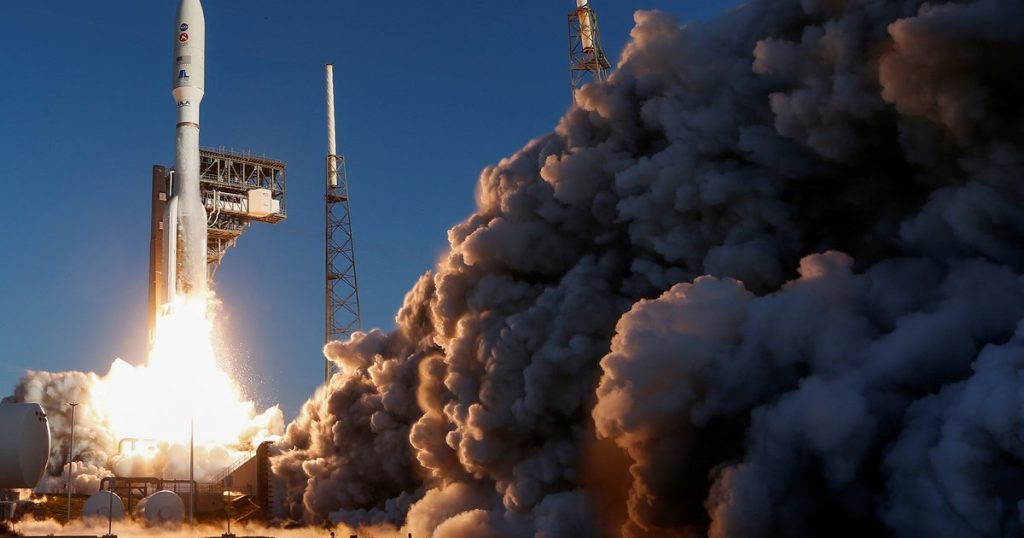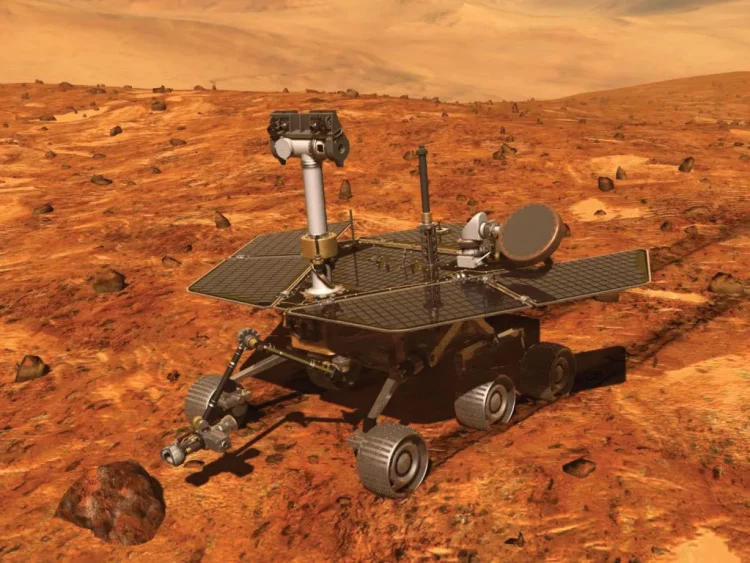Introduction: Overview of Global Efforts to Land on Mars
For decades, humanity has gazed at Mars with wonder and ambition. The Red Planet has captivated the imagination of scientists, engineers, and dreamers alike, driving global efforts to explore its surface and ultimately send humans to live there. With recent advancements in space exploration technology, the dream of establishing a human presence on Mars is moving closer to reality than ever before.
In the 2020s, the race to Mars is not just a scientific endeavor, but a geopolitical and commercial one, involving both government agencies like NASA and private space companies such as SpaceX. While space agencies and private companies have been sending robotic probes and rovers to Mars for decades, the next big step involves landing humans on the planet and creating a sustainable presence.
This article will examine the key players in the Mars exploration race, the technological challenges they face, the potential long-term benefits of Mars colonization, and how international collaboration may shape the future of human space exploration.
NASA vs. SpaceX: The Competition Between Government and Private Sector Space Missions
NASA has long been the cornerstone of space exploration, and its Mars missions, such as the Perseverance rover and the Ingenuity helicopter, have provided valuable data about the planet’s surface and atmosphere. The U.S. space agency’s Artemis program, which aims to return humans to the Moon and establish a sustainable presence there, is seen as a stepping stone for a future human mission to Mars. NASA has plans to send astronauts to Mars in the 2030s, but this mission will depend heavily on advances in technology, funding, and international partnerships.
However, the private sector—led by companies like SpaceX—has emerged as a formidable competitor in the race to Mars. Founded by Elon Musk, SpaceX has set its sights on sending humans to Mars within the next decade. SpaceX’s Starship, a fully reusable spacecraft designed for deep-space missions, is central to Musk’s vision of establishing a human settlement on Mars. Unlike NASA, which is constrained by government budgets and regulations, SpaceX has significant flexibility in its approach to innovation and mission timelines, making it a strong contender in the race to Mars.
The rivalry between NASA and SpaceX reflects a larger trend in the commercialization of space. While NASA has a long history of pioneering space exploration, SpaceX’s advances in reusable rocket technology and its focus on ambitious goals like Mars colonization have revolutionized the space industry. The two organizations have begun collaborating as well, with SpaceX providing transportation services for NASA astronauts to the International Space Station (ISS) using its Crew Dragon spacecraft. However, the competition between the two is fierce, with both entities striving to be the first to establish a human foothold on Mars.

Technological Challenges: What It Will Take to Land Humans on Mars and Establish a Base
Landing humans on Mars is one of the most formidable technological challenges humanity has ever faced. The planet is located approximately 225 million kilometers (140 million miles) from Earth, with a journey that could take anywhere from six to nine months using current propulsion technologies. This distance presents a range of logistical and engineering challenges, from life support systems to radiation protection.
- Spacecraft Design and Propulsion: Developing a spacecraft capable of safely transporting humans to Mars and back is a massive undertaking. SpaceX’s Starship is designed to carry large crews and cargo to Mars, but the spacecraft must be equipped with advanced propulsion systems, life support systems, and redundancy features to ensure safety during the long journey.
- Radiation Protection: Mars lacks a protective magnetic field and thick atmosphere like Earth’s, meaning astronauts will be exposed to high levels of cosmic radiation during their journey and stay on the Martian surface. Developing radiation shielding and safe habitats for astronauts is a critical challenge that must be addressed to prevent long-term health risks such as cancer or neurological damage.
- Landing and Takeoff: Mars’ thin atmosphere presents significant challenges for landing and taking off. Unlike the Moon, where spacecraft can land using simple thrusters, Mars requires more sophisticated methods to slow down spacecraft. SpaceX’s Starship, for example, is designed with a heat shield and engines to allow for a controlled descent and landing. The same technology will be needed to ensure a safe return to Earth after the mission is completed.
- Life Support and Sustainability: Once on Mars, astronauts will need sustainable life support systems, including oxygen generation, water recycling, food production, and waste management. These systems must operate in a closed-loop environment, as resupplying from Earth will be too costly and impractical. NASA and SpaceX are investigating technologies such as in-situ resource utilization (ISRU), which would allow astronauts to extract water, oxygen, and even fuel from the Martian atmosphere and soil.
- Mars Habitats: Establishing a base on Mars requires building habitats that can protect astronauts from extreme temperatures, radiation, and dust storms. These habitats must also be capable of maintaining a livable environment with adequate space for research, food production, and leisure activities. 3D printing technologies and inflatable habitats are some of the proposed solutions for building the first Martian homes.
Mars Colonization Plans: Long-Term Goals of Establishing a Sustainable Human Presence on Mars
The vision of Mars colonization goes far beyond the first human landing. Both NASA and SpaceX are planning for long-term missions to establish a sustainable human presence on the planet, but the timeline and scope of these goals differ significantly.
SpaceX’s ultimate goal, as articulated by Elon Musk, is to establish a self-sustaining colony on Mars with a population of around one million people. Musk envisions Mars as a “backup” for humanity, a place where humans can thrive and diversify in case of existential threats to life on Earth. His plan involves launching regular missions to Mars to transport people and supplies, with the goal of making life on Mars as Earth-like as possible.
NASA’s goals for Mars colonization are more focused on scientific exploration and the gradual buildup of infrastructure. NASA envisions a more phased approach, starting with a few astronauts conducting short-term missions, followed by longer stays and the eventual construction of a permanent base. NASA’s Mars program will likely involve a combination of robotic and human missions, working in partnership with international agencies and private companies to establish the necessary technologies and infrastructure for a sustainable human presence.
Both organizations recognize the importance of developing Mars’ resources and capabilities over time. Technologies such as growing food in Martian soil, generating oxygen from the carbon dioxide in the atmosphere, and utilizing local resources for construction are key to reducing reliance on Earth and ensuring that Mars colonization is possible.
The Role of International Collaboration: How Countries Around the World Are Contributing to Mars Exploration
While NASA and SpaceX are the most prominent players in the Mars race, other countries and space agencies are also making significant contributions to the exploration of Mars. Collaboration is crucial to the success of any Mars mission, as the challenges are too great for any single nation or company to tackle alone.
The European Space Agency (ESA), for example, has been involved in several Mars missions, including the ExoMars program, which aims to search for signs of past life on Mars. The Russian space agency, Roscosmos, has also contributed to Mars exploration efforts, though its focus has been more on robotic missions.
China has rapidly emerged as a major player in space exploration, with its Tianwen-1 mission successfully landing a rover, Zhurong, on Mars in 2021. China’s ambitious space program includes plans for crewed Mars missions in the 2030s, and it is expected to play a growing role in future Mars exploration efforts.
International collaboration on Mars exploration allows for the sharing of knowledge, resources, and technological advancements, reducing costs and improving mission success rates. For example, NASA’s collaboration with the European Space Agency on the Mars Sample Return mission will involve sending a spacecraft to retrieve samples from the Martian surface and return them to Earth for analysis.
Conclusion: The Future of Human Exploration on Mars and the Race to Be the First
The race to Mars is an exciting and high-stakes competition that will shape the future of human space exploration. Whether it’s NASA’s methodical, government-backed approach or SpaceX’s ambitious, commercial-driven goals, the ultimate goal is clear: to land humans on Mars and establish a sustainable presence there.
The technological challenges of getting to Mars, surviving on the planet, and eventually colonizing it are immense. However, the advancements in space technology and the collaborative efforts of countries and private companies are bringing this vision closer to reality. Mars represents not just a new frontier in space exploration but also a chance for humanity to expand its horizons and ensure the survival of our species beyond Earth.
As the space race accelerates, it’s clear that Mars holds the key to the next great chapter in human exploration. The competition, collaboration, and technological innovations that define this race will leave an indelible mark on the future of space exploration and humanity’s place in the cosmos.


















































Discussion about this post